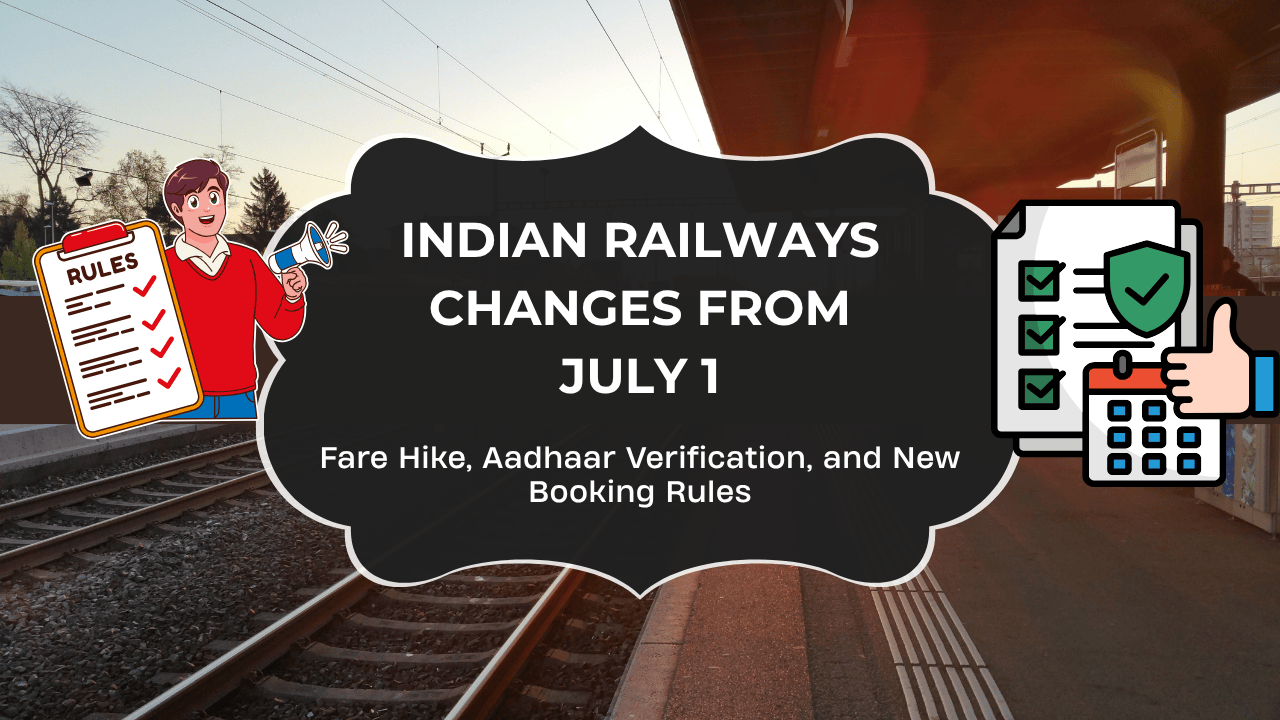Listen to This Article
In a significant step towards enhancing the operational efficiency of India’s flagship semi-high-speed trains, Indian Railways has announced the establishment of a ₹150 crore Vande Bharat Train Maintenance and Training Hub at the Nishatpura Rail Coach Factory in Bhopal, Madhya Pradesh. This upcoming facility will play a crucial role in ensuring the smooth functioning and long-term maintenance of the Vande Bharat fleet, while also serving as a modern training ground for railway personnel.
A Strategic Boost to India’s Railway Infrastructure
This new facility forms a key component of Indian Railways’ extensive modernization efforts aimed at supporting the fast-expanding Vande Bharat Express train network nationwide.With the increasing number of Vande Bharat trainsets in operation, the need for a dedicated maintenance and training hub has become critical. Nishatpura, located in close proximity to Bhopal Junction, was chosen strategically due to its central location and connectivity.
Key Features of the Maintenance and Training Hub
The upcoming hub will feature:
- Dedicated Maintenance Depot: Equipped to handle up to 10 Vande Bharat trainsets, this depot will carry out regular inspections, repairs, and upkeep to ensure safety and high performance.
- Advanced Training Center: The facility will feature simulation laboratories, cutting-edge diagnostic equipment, and dedicated classrooms to provide training for loco pilots, station staff, maintenance engineers, and guards.
- Modern Amenities: Infrastructure such as administrative offices, hostels, canteen, auditorium, library, computer labs, and a medical center will be provided to support a full-fledged training ecosystem.
Supporting the Vande Bharat Mission
Vande Bharat trains symbolize India’s technological progress in the railway sector. These indigenous trains offer fast, comfortable, and energy-efficient travel and are gradually replacing older models on key routes. With over 50 trains already deployed and more in production, the Bhopal facility will ensure that trained manpower and regular maintenance are always available to meet the demands of this modern fleet.
Construction Timeline and Future Prospects
According to railway officials, tenders have been floated and work is expected to begin shortly. The hub is likely to become operational by 2026. Once completed, it will not only serve as a backbone for the Vande Bharat program in Central India but also create employment opportunities and boost local infrastructure development.
The establishment of a ₹150 crore Vande Bharat Maintenance and Training Hub at Bhopal’s Nishatpura is a visionary step by Indian Railways. It reflects the government's commitment to technological advancement, safety, and skill development in the railway sector. As the Vande Bharat network continues to expand, this hub will be instrumental in ensuring efficiency, reliability, and world-class service standards.
1. Operational Readiness and Reliability
As India rapidly expands its Vande Bharat fleet, having decentralized, region-specific hubs like this one in Bhopal ensures better train uptime, faster issue resolution, and optimized maintenance. This is critical for maintaining the high standards and punctuality Vande Bharat is known for.
2. Skill Development and Employment
Setting up a modern training center within the hub is a great initiative. It will upskill existing railway staff and prepare the next generation of technicians, loco pilots, and maintenance engineers. This move supports India’s vision of becoming self-reliant in high-speed rail technology and operations.
3. Boost for Central India
The location — Bhopal — is smartly chosen. Being centrally located, it can serve trains operating in multiple zones. It also brings industrial and infrastructural development to the region, generating local employment and improving logistics.
4. Strengthening the Vande Bharat Ecosystem
With more than 50 Vande Bharat trains already in service and many more planned, dedicated infrastructure like this ensures long-term sustainability. Without such hubs, managing a growing fleet becomes inefficient and centralized.
5. Symbolic of Modern Indian Railways
This move reflects Indian Railways’ transition from a traditional transport system to a modern, technologically advanced network. It aligns with the larger vision of a world-class, passenger-centric rail system in India.
Pros
1. Improved Maintenance Efficiency
- A dedicated hub ensures quicker and more efficient servicing of Vande Bharat trains, reducing downtime and improving operational reliability.
2. Skilled Workforce Development
- The training center will upskill railway staff with hands-on experience, advanced tools, and simulations — enhancing safety and service standards.
3. Support for Growing Fleet
- With the number of Vande Bharat trains increasing, this hub will act as a crucial backbone for their upkeep across Central India.
4. Boost to Local Economy
- The project will generate employment opportunities during construction and operation, promoting local economic development in Bhopal.
5. Strategic Location
- Bhopal’s central location allows easier access to trains operating in various regions, making it logistically smart for maintenance coverage.
6. Long-Term Cost Savings
- Regular, localized maintenance can prevent major breakdowns or expensive repairs, saving money in the long run.
Cons
1. High Initial Investment
- ₹150 crore is a significant expenditure. There may be concerns about return on investment, especially if the utilization of the facility is not optimal initially.
2. Operational Challenges
- Setting up and managing a high-tech training and maintenance center demands highly skilled professionals, which may initially be in short supply.
3. Delays in Implementation
- Infrastructure projects often face delays due to bureaucracy, contractor issues, or logistical hurdles, which could postpone the hub’s functionality.
4. Underutilization Risk
- If future expansions of the Vande Bharat fleet are slower than expected or routes change, the facility may be underused.
5. Maintenance Centralization Debate
- While decentralizing maintenance is generally good, focusing too much investment in one location may leave other regions underserved without similar facilities.
Future Possibilities for the Nishatpura Hub
1. Upgrade to a Full-Fledged Vande Bharat Manufacturing Unit
- With the existing infrastructure in place, the facility can eventually be expanded to manufacture or assemble Vande Bharat coaches, reducing dependency on other plants and easing production pressure.
2. Research & Development (R&D) Center
The upcoming facility at Nishatpura Rail Coach Factory in Bhopal, Madhya Pradesh, will be essential for the smooth operation and sustained maintenance of the Vande Bharat fleet, as well as providing a state-of-the-art training center.
- The training and diagnostics labs can be upgraded to serve as an R&D hub for:
- Improving train design and components
- Developing energy-efficient systems
- Evaluating AI-driven safety systems, implementing predictive maintenance, and developing automation technologies
- Improving train design and components
3. Center for Skill Development & Certification
- The hub could gain recognition as a national railway training institute that:
- Offers accredited courses in high-speed rail technology
- Trains not just Indian but foreign railway professionals
- Collaborates with academic institutions like IITs or NITs for joint certifications
- Offers accredited courses in high-speed rail technology
4. Maintenance Base for International Trains
- If India exports Vande Bharat trains to neighboring countries (like Nepal, Sri Lanka, Bangladesh), this hub could serve as a regional service and overhaul center, boosting India’s rail diplomacy and soft power.
5. Green & Sustainable Railway Operations Center
- It can evolve into a model green facility with:
- Solar panels
- Rainwater harvesting
- Electric vehicle (EV) fleets for internal transport
- Smart waste management systems
- ISO certifications for sustainable rail operations
- Solar panels
6. Emergency Response & Disaster Simulation Unit
- Given its advanced simulation labs, the facility can be equipped to simulate real-time crisis situations, train staff for emergencies like:
- Onboard fire or derailments
- Security threats
- Medical emergencies
- Natural disasters
- Onboard fire or derailments
7. AI-Powered Predictive Maintenance System
- By integrating AI and IoT, the facility can act as a central command center that:
- Monitors real-time data from Vande Bharat trains
- Predicts failures before they happen
- Reduces unscheduled downtime
- Monitors real-time data from Vande Bharat trains
8. Public-Private Partnerships (PPP) Innovation Zone
- Indian Railways could allow private tech companies, startups, or institutions to collaborate with the hub to pilot new technologies — such as regenerative braking, battery-operated coaches, or advanced signaling systems.
The Nishatpura hub is not just a repair and training facility — it is a strategic infrastructure investment with potential to become a powerhouse for innovation, global collaboration, and railway modernization. With proper planning and phased expansion, it could one day rival world-class rail tech hubs in countries like Japan, Germany, or China.
 Unlock Your Savings Today!
Unlock Your Savings Today!
Get the best deals with unbeatable service and exclusive offers.

 Grow Your Business with Proven Digital Marketing
Grow Your Business with Proven Digital Marketing
Ready to attract more customers and outshine your competition? Our tailored digital marketing strategies help you rank higher, generate qualified leads, and build a brand people trust. Let’s take your business to the next level.
Digital Marketing Solutions in Leading Cities


 Disclaimer
Disclaimer
The views expressed by experts in this article are their own and do not necessarily reflect the opinions of any website, organization, institution, or affiliated entity. If you have any concerns regarding this article, please contact us at contact@quantamminds.com and also on WhatsApp
Frequently Asked Questions
What is the purpose of the ₹150 crore Vande Bharat hub at Bhopal’s Nishatpura Rail Coach Factory?
The purpose of this facility is to maintain and service Vande Bharat trains and provide advanced training to railway personnel. It will ensure smooth operation, safety, and technical efficiency of India’s semi-high-speed train fleet.
What facilities will be included in the new hub?
The hub will feature a state-of-the-art maintenance depot capable of servicing up to 10 Vande Bharat trains, along with advanced diagnostic and simulation laboratories, a training center, hostels, a canteen, medical facilities, a library, and computer labs. center, administrative offices, and an auditorium.
. When is the Nishatpura maintenance and training hub expected to be operational?
The tendering process has begun, and construction is expected to start soon. The hub is likely to be operational by 2026, depending on timely execution.
Why was Bhopal’s Nishatpura chosen for this project?
Bhopal’s central location makes it strategically ideal for maintaining Vande Bharat trains operating across various zones. Nishatpura also has existing infrastructure and rail connectivity, making it an ideal choice for this development.
How will this hub benefit Indian Railways and the public?
The hub will:
- Ensure quicker and more efficient train maintenance
- Minimize downtime and delays
- Provide specialized training to staff
- Create jobs and boost local economy
- Enhance passenger safety and elevate the travel experience on Vande Bharat trains








 Pallavi Singh on 2025-05-26
Pallavi Singh on 2025-05-26

 Ashwani Kumar
Ashwani Kumar 



